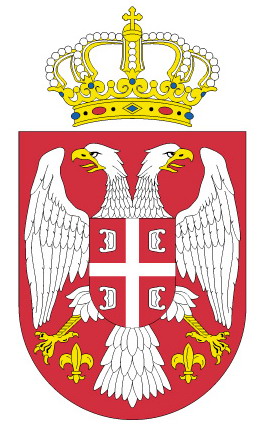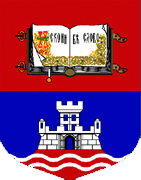Tour of Belgrade
The tour of Belgrade will include lunch in the restaurant Old Cottage (serb. "Stara koliba") which is located on the confluence of Sava and Danube. It would continue with the bus tour of Belgrade's attractions: Parliament, Church of St. Sava, House of Flowers... It will end with a guided walk through Belgrade downtown.
Kalemegdan
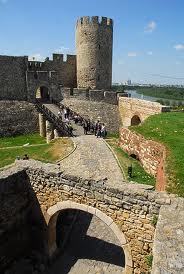
Kalemegdan Fortress
The Belgrade Fortress was built as a defensive structure on a ridge overlooking the confluence of the Sava and the Danube during the period from the 1st to the 18th century. Today, the fortress is a unique museum of the history of Belgrade. The complex comprises the Belgrade Fortress itself, divided into the Upper and Lower Towns (Gornji/Donji grad) and the Kalemegdan Park. Because of its exceptional strategic importance, a fortification - a Roman 'castrum' - was erected here at the end of the first century A.D., as a permanent military camp for the Fourth Flavian Legion. After being razed to the ground by the Goths and the Huns, the fortification was rebuilt in the first decades of the sixth century. Less than a century later it was demolished by the Avars and the Slavs. Around this fortification on the hill above the Sava and Danube confluence, the ancient settlement of Singidunum grew up, followed by the Slav settlement of Belgrade in the same place. The Belgrade Fortress has frequently been demolished and rebuilt. Under the rule of Despot Stefan Lazarević, Belgrade became the new capital of Serbia and was fortified by the addition of the extensive fortifications of the Upper and Lower Town. The Despot's palace was built in the old castle, and a military harbour was added on the Sava River. An advanced mediaeval city developed within the ramparts.

Kalemegdan park
Today, Kalemegdan Park is the most beautiful and the biggest park in Belgrade, which is also the most important cultural and historical complex, in which the Belgrade Fortress stands high above the Sava and Danube confluence. Monuments to many famous cultural and public persons were erected in the park. Kalemegdan now includes the Military Museum, Cvijeta Zuzorić Art Pavilion, City Institute for Protection of Cultural Monuments, Zoo, a children's amusement park, the large number of sport facilities, restaurants and so on.
The Republic Square
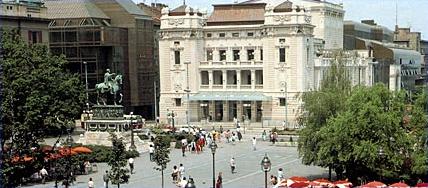
Republic Square (Freedom Square)
The Republic Square is one of the central town squares of Belgrade. It is the site of some of Belgrade's most recognizable public buildings, including the National Museum, the National Theatre and the famous statue of Prince Mihailo. The main town square, Republic Square is a rendezvous for young people before they move off to other entertainments. In fact people who are not very familiar with Belgrade usually use this square as a place to get their bearings. When anyone in Belgrade says they will “see you in the Square” (“Vidimo se na Trgu!”) this is the square they are referring to. The square as it is today was formed after the demolition of the Stambol Gate (1866) and the construction of the National Theatre building (1869). The Stambol Gate which was built by the Austrians at the beginning of the 18th century laid between the Monument to Prince Mihailo and the National Theatre. This was the largest and most beautiful gate at the time when the city was still encompassed by moat. The road to Constantinople (Istanbul) passed through the gate from which it derived its name. Today, the Republic Square is also called the Freedom Square because of many demonstrations that took place on it, during the Milošević's time.
Knez Mihailova Street
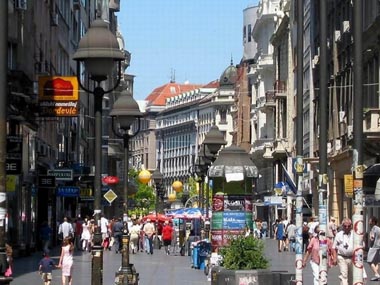
Knez Mihailova Street
Knez Mihailova street is a pedestrian zone and shopping center - protected by law as one of the oldest and most valuable monumental complexes of the city, with a large number of representative buildings and urban houses built at the end of 1870s. It is thought that in, as early as, the Roman times there was the center of the Singidunum settlement. In this area, at the time of Turks, there were winding streets with gardens, drinking-fountains and mosques. In the middle of XIX century, there was a garden of Knez Aleksandar Karađorđević in the upper part of the street. After the adoption of the regulation plan of Belgrade in 1867, designed by Emilijan Josimović, the street has soon been built and gained its today's physionomy and content. The most influential and wealthiest families of the commercial and political society of Belgrade have come to live there. In 1870, the city authorities officially gave a name to this street - Ulica Kneza Mihaila.
The Building of the Serbian Academy of Sciences and Arts, 35 Knez Mihailova Street, was built in 1923-1924, by the plans of 1912 made by Dragutin Đorđević and Andra Stevanović, in style of academism with elements of secession. The building houses: the Library of the Academy, one of the richest in Belgrade; the Archive of the Academy with numerous materials about the history of Serbia; the Gallery of the Academy on the ground floor, with a special lecture hall, the bookstore and the antique shop.
Serbian Parliament
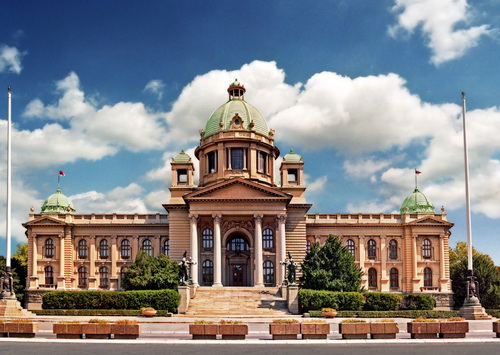
Serbian Parliament
The first design for the House of the National Representation was made by Konstantin A. Jovanović in 1891. At the open competition of 1901 for the building in the area near the Batal mosque, the winning work was that of Jovan Ilkić, which is, in fact, a variant of Jovanović's solution. The construction of the palace began in 1907, and the cornerstone was laid by King Petar I. During World War I, Ilkić has died in the concentration camp in Nežider, while the plans have been lost. In accordance with the completed parts of the building, the new plans have been made by Ilkić's son Pavle, while Nikolaj Krasnov has helped completion of the building, especially of the interior. The construction was not finished until 1936. It was designed in the manner of academic traditionalism, with rich interior (architectural and artistic) decoration, made by, at that time, most famous artists and craftsmen. In 1939, a monumental sculptural group made by the famous sculptor Toma Rosandić was placed in front of the main entrance. It was named "Igrali se konji vrani" (Black horses are playing).
Patriarchate of the Serbian Orthodox Church
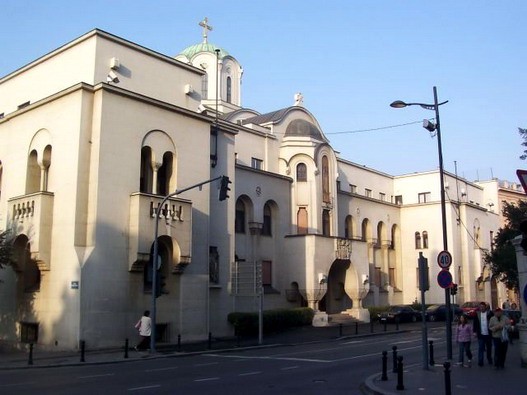
Patriarchate
Today's building of the Patriarchate was built in 1934-1935 and designed by the architect Viktor Lukomski. The building has a square base, it is solid and has monumental forms. On the main facade, against the Congregational Church, an impressive portico stands out, with low columns and an arched portal above which is a sculpted coat of arms of the Serbian Patriarchate. On the top of this facade, in a niche, a mosaic composition represents St. John the Baptist. In the east part of the building, there is a chapel dedicated to St. Simeon. It contains a carved iconostasis, the work of Ohrid masters, bearing icons painted in 1935 by Vladimir Predojević. The library and museum of the Serbian Orthodox Church are in this building, too.
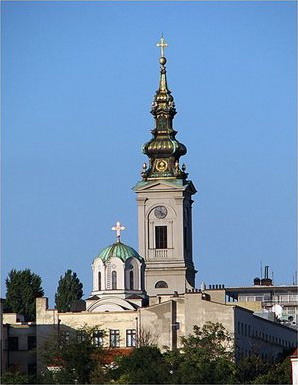
Congregational Church
Congregational church was built in 1837-1840 by order of Knez Miloš Obrenović, according to the design and plans of A. F. Kverfeld, a builder from Pančevo. It is built in style of classicism with late baroque elements. The church is dedicated to St. Michael the Archangel. The interior is richly decorated. The gold-plated carved iconostasis was made by the sculptor Dimitrije Petrović, while the icons on the iconostasis, thrones, choirs and pulpits, as well as those on the walls and arches were painted by Dimitrije Avramović, one of the most distinguished Serbian painters of the XIX century. The special value of the church is its treasury with the relics of the Serbian saints Czar Uroš and Despot Steva Štiljanović, as well as of the heads of the Church and Serbian rulers of the Obrenović dynasty (Miloš, Mihailo and Milan). Two famous men of the Serbian culture stand in front of the main portal: Dositej Obradović and Vuk Stefanović Karadžić.
St. Sava's Church

Church of Saint Sava
The largest Orthodox church in the Balkans, and one of the largest in the world is the church dedicated to Saint Sava, founder of the Serbian Orthodox Church and an important figure in medieval Serbia. The church was built at the location where, according to legend, the remains of the first Serbian archbishop Sava were moved from the Mileševa monastery as ordered by Sinan-pasha in 1594. Construction began in 1935, based on designs by the architects Bogdan Nestorović and Aleksandar Deroko. Construction was halted due to the outbreak of World War II and the bombing of Belgrade, followed by the time of the communist Yugoslavia and thus the church had to wait for better times. Construction was resumed at last in 1985. The interior height of the church, from the floor to the top of its dome, is 65 meters, while the outside height with the cross is 79 meters. The church has three choir galleries with capacity for 700 choir members each, as well as an observation gallery. The ground floor and galleries of the church can house 10,000 people.

Saint Sava (1169 - 1236), first Serbian archbishop
St. Sava was the son of Stefan Nemanja, grand župan of Serbia. As a young boy, he had longed for spiritual life, so he run away to the Holy Mount Athos, where he entered an order and died as a monk under the name of Simeon. From the emperor and the patriarch, Sava had obtained independence of the Serbian Church, and he became the first Serbian archbishop. Together with his father, Sava built the Chilandar Monastery (today in Greece), and, later on, many other monasteries, churches and schools all over Serbia. He travelled twice as a pilgrim to the Holy Land. He reconciled his brothers, fighting about power, Serbs with their neighbours, and, through creation of the Serbian Church, he has created Serbian state and culture. He has brought peace to all Balkan peoples and worked for the well-being of them all, which has brought him respect and affection of all those nations. To the Serbs he has given a Christian soul, not destroyed with the destruction of the Serbian state. He died in Trnovo, during the rule of emperor Asen, on January 12, 1236, because he got ill after the Epiphany service. King Vladislav has transferred Sava's remains to the Mileševa monastery, but the Turkish Sinan-pasha took the remains and burned them in Vračar, Belgrade, on April 27, 1594, aiming to suppress the Serbian struggle for freedom.
House of Flowers
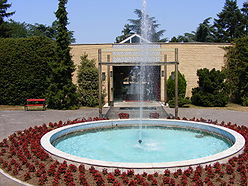
House of Flowers
House of Flowers (Serbian: Kuća cveća) is the mausoleum of the leader of the Socialist Federal Republic of Yugoslavia, Josip Broz Tito, who died on May 4, 1980. Josip Broz Tito was a Yugoslav revolutionary and statesman. Even though he has been criticized as an authoritarian, Tito was a popular public figure both in Yugoslavia and abroad, viewed as a unifying symbol for the nations of the Yugoslav federation. He gained international attention as the leader of the Non-Aligned Movement, working with Jawaharlal Nehru of India and Gamal Abdel Nasser of Egypt. He was a Secretary-General (later President) of the Communist Party of Yugoslavia (1939–80), and went on to lead the World War II Yugoslav guerrilla movement, the Yugoslav partisans (1941–45). After the war, he was the Prime Minister (1943–63) and later President (1953–80) of the Socialist Federal Republic of Yugoslavia (SFRY). From 1943 to his death in 1980, he held the rank of Marshal of Yugoslavia, serving as the supreme commander of the Yugoslav military, the Yugoslav People's Army (JNA). With a highly favourable reputation abroad in both Cold War blocks, Josip Broz Tito received some 98 foreign decorations, including the Legion of Honour and the Order of the Bath.
House of Flowers is a part of the Museum of Yugoslav History in Dedinje. It was internally called "flower shop" during Tito's life when it served as his auxiliary office with a covered garden. For almost a decade after the breakup of the Socialist Federal Republic of Yugoslavia, the entire complex was closed to the public and the military guards were permanently removed. However, today the site is open again to tourists and to the people who wish to pay their respects. Many guests, from all over the former Yugoslavia, visit especially on May 25 (Tito's official birthday) - the former Youth Day during socialistic times.






